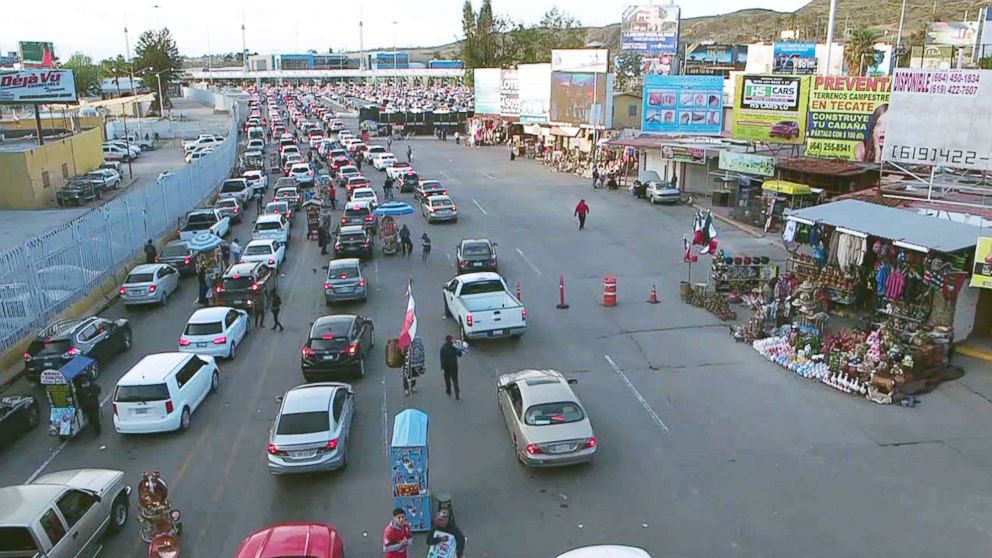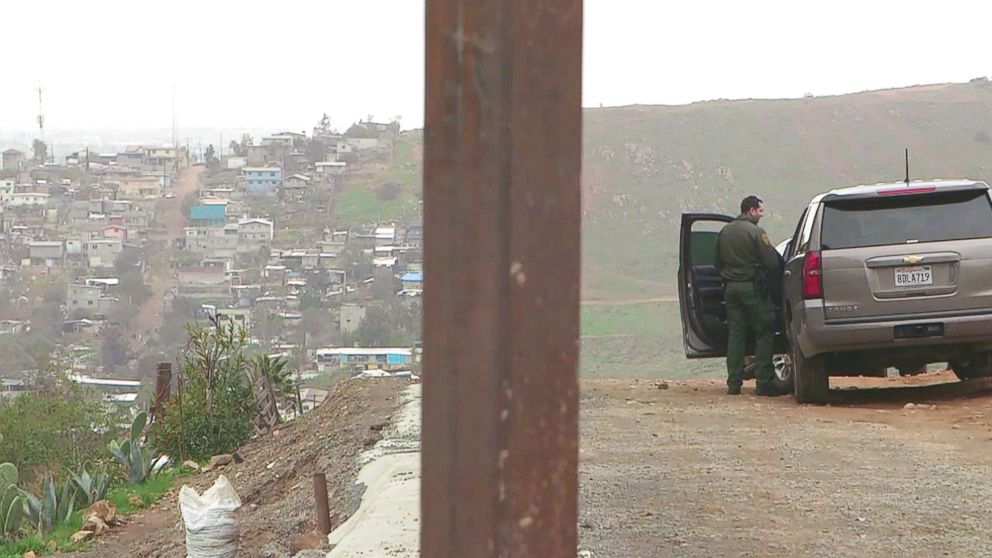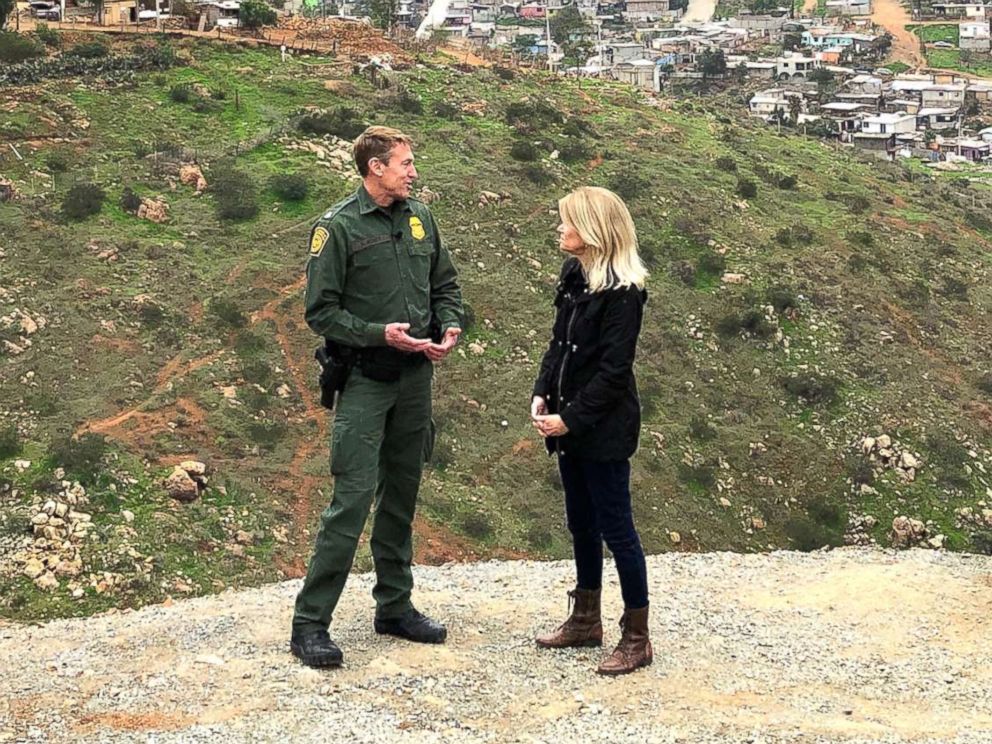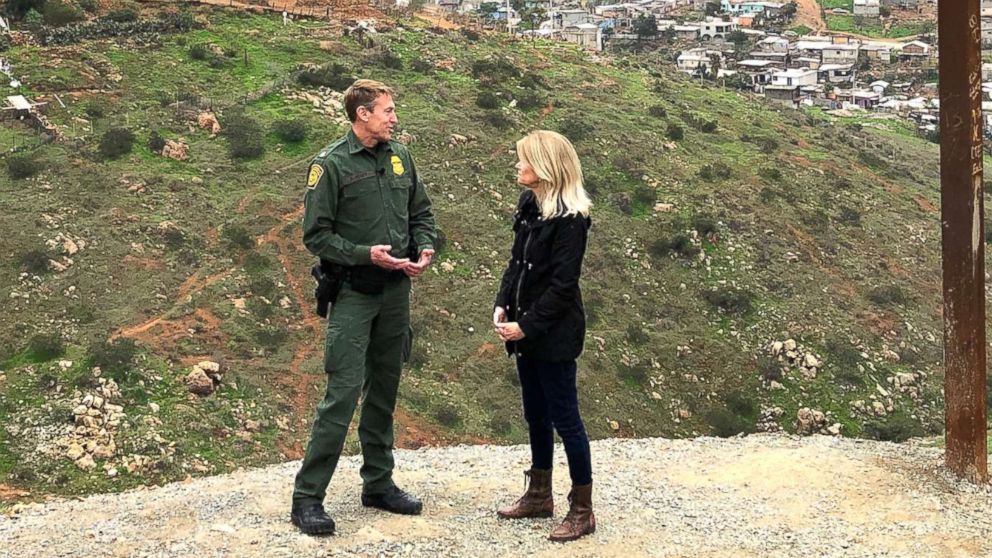Some migrants say a wall wouldn't stop them from entering the US, but Customs and Border Protection says it's a key part of the solution
Alisson Luna, 22, fled Honduras, after she said was raped, with her three children and grandmother, embarking on a nearly 3,000-mile journey to reach the United States in order to seek asylum. Waiting in Tijuana, Mexico until she and her family could make their claim, Luna told ABC News that this was her only option.
Luna and her family are waiting at El Barretal, a music venue turned migrant shelter about 30 miles south of the U.S. southern border in Tijuana. The cramped and crowded shelter had only 300 migrants when ABC News was there Wednesday, but at its peak, was the waiting place for some 3,000.
Raddatz asked Luna if a border wall would stop people attempting to cross illegally.
“No,” she said.
A wall along the U.S.-Mexico border was a signature campaign promise for President Donald Trump, and the government has been partially shut down for a record 30 days because Trump and Congress can’t agree on a funding deal.
On Saturday, Trump announced a new immigration and border security plan as an attempt to reach an agreement between Republicans and Democrats to end the shutdown. In addition to many funding propositions related to enhanced border security, at the crux of this proposal, Trump wants $5.7 billion to build an additional 230 miles of a see-through steel barrier system, “or a wall,” as Trump said Saturday.
“This is not a 2,000-mile concrete structure from sea to sea," Trump said from the White House. "These are steel barriers in high-priority locations.”

In an attempt to entice Democrats to support the deal, he also proposed extending protections from deportation for three years for some 700,000 so-called “Dreamers,” children brought to the U.S. illegally by their parents who were given a protected status under former President Barack Obama’s Deferred Action for Childhood Arrivals (DACA) executive order, and for Temporary Protected Status recipients whose status is currently facing expiration.
Apprehensions at the border have been declining for nearly two decades, according to U.S. Customs and Border Protection (CBP). For the last year, those numbers have been rising, but that rise is not necessarily a trend.
After traveling back to the U.S. side of the border, Raddatz and her team toured 14 miles of the border with CBP San Diego Sector Chief Patrol Agent Rodney Scott. It didn’t take long for them to witness migrants, including a 25-year-old woman fleeing El Salvador with her 2-year-old son, trying to sneak into California in an area where new walls were being built. The woman and her son were apprehended by CBP.

“Is there any part of you still where you look at that family and think I've got to help?” Raddatz asked Scott.
“On many, many levels I feel compassion for those people,” Scott answered. “But I also feel compassion for the several thousand people that have been in line at the San Ysidro [San Diego] port of entry for several weeks, waiting to do it right, and those people literally just cut in line in front of them.”
Scott said CBP needs more areas with a border wall, even if it’s not a complete solution.
“We cannot effectively control the border without barriers to slow down illegal entries,” he told Raddatz, adding that while a wall wouldn’t necessarily stop the illegal flow of drugs, which mainly come through legal port of entries and tunnels, a wall would allow Scott “to free up personnel to focus on that threat.”
In addition to border wall funding and temporary protections for some immigrants, Trump’s border security proposal seeks nearly $800 million for additional border agents, law enforcement officers and other staff, $800 million in humanitarian assistance, including new temporary housing for migrants, and more than $800 million for “technology, canines and personnel to help stop the flow of illegal drugs, weapons and other contraband.”
Just on Thursday morning, CBP officers near San Diego had already arrested almost 100 people, including children. There has been a dramatic increase in the number of families crossing the border, and after backlash over a Trump administration “zero tolerance” policy which led to children being separated from adults once apprehended, families are now held together, but there’s a limit to how long children can be detained.
“If you come with a child, you will be released within about 20 days,” Scott said told Raddatz. “So that's created a pull factor and once people figured that out, they don't mind being arrested, incarcerated for a few days because they know they're going to be released into the U.S.”

Many asylum seekers are tracked with an ankle bracelet, including some migrants Raddatz spoke to at the Safe Harbors Network in San Diego, a shelter that has helped more than 7,000 refugees, immigrants and asylum seekers over the past two and a half years.
An 18-year-old mother at the shelter, who asked to not be shown on camera, said she was fleeing gang violence. She said she had climbed a fence to enter the United States and that a wall wouldn’t have stopped her.
Pastor Bill Jenkins, the executive director of Safe Harbors Network, said that he hasn’t met any family that’s entered the country “for any other reason than the fact that if they stayed where they were, they would've been killed, they would've been raped, they would've been exploited.”
“I don't care how high you build your damn wall,” the pastor said. “Immigration is going to continue.”




